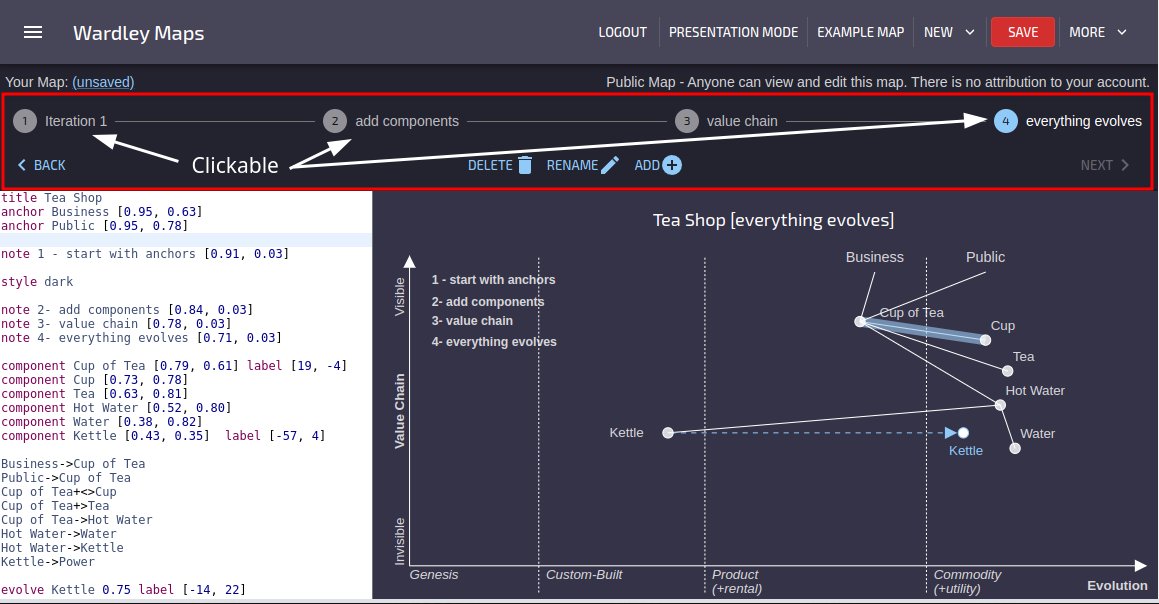Map Iterations
Map Iterations is a powerful feature that allows you to capture and track how your Wardley Map evolves over time. This feature transforms your maps from static representations into dynamic timelines of strategic evolution.

Key Benefits
Time-Phased Evolution
Create snapshots of your Wardley Map at different points in time to:
- Track component evolution and movement
- Document relationship changes
- Record strategic decisions and their outcomes
Enhanced Strategic Planning
- Plan future states of your landscape
- Visualize the expected evolution of components
- Map out strategic transformations
- Document planned changes and transitions
Historical Insights
- Review historical development of your landscape
- Analyze trends and patterns
- Evaluate the effectiveness of past strategic decisions
- Learn from previous iterations
Improved Collaboration
- Share specific iterations with team members
- Foster shared understanding of landscape changes
- Support strategic discussions with historical context
- Document and communicate strategic evolution
Effortless Updates
- Easily modify maps in each iteration
- Track changes and adaptations
- Maintain a clear history of landscape evolution
- Document the rationale for changes
Usage Tips
- Create iterations at meaningful strategic intervals
- Document significant changes between iterations
- Use iterations to tell the story of your strategic journey
- Reference specific iterations in strategic discussions
Visual Example

Iterations help you move beyond static representations to capture the dynamic nature of strategic planning. By incorporating time-phased evolution into your Wardley Maps, you can make more informed decisions and better adapt to change.